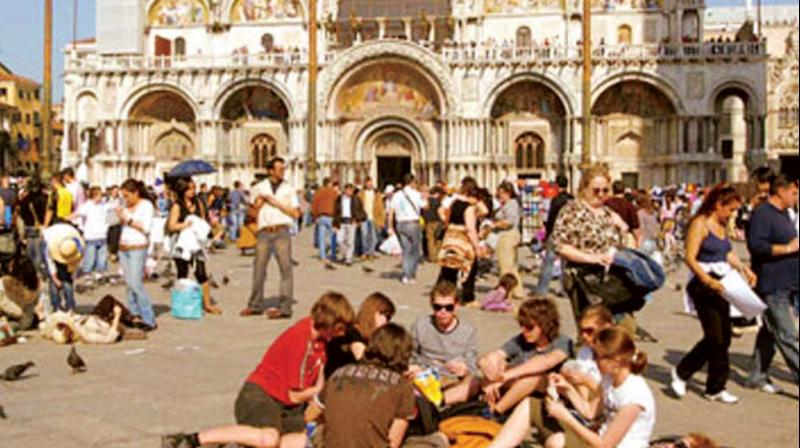So, let's talk green: Tourism at risk

The joy and happiness that tourism provides for tourists is at risk. When we examined the risk of climate change to tourism, last week, I gave the example of the bleaching of the Great Barrier reef because of acidification of the oceans due to global warming. In this second article, I will talk about the detrimental effects of unplanned unsustainable mass tourism.
Tourism accounts for 10% of the global GDP valued at US$7.6 trillion, employing 277 million jobs in 2014. Tourism is a rapidly growing source of income across India, producing 6.3% of the country's GDP in 2015 and with a predicted annual growth rate of 7.5%, with the sector currently supporting 37 million jobs across the country.
The factor that puts tourism at risk, that is the subject of this article, is unplanned unsustainable mass tourism, which is beginning to have negative effects on destinations.
A classic example of this is Venice - a tourist's paradise. Venice is really small. It covers a mere three square miles, but it's composed of clusters of old buildings separated by 182 canals on 126 tiny islands connected by 435 bridges and a large number of tiny, winding streets. Much like the demise of the Great Barrier Reef, the impending demise of Venice is now being talked about.
One expert who is talking about it is Salvatore Settis in a book titled 'If Venice dies'. This is a must read for anyone who is interested in how a destination can be killed by tourism. Settis is an archaeologist, art historian and former director of the Getty Research Institute of Los Angeles and the Scuola Normale Superiore of Pisa. He is chairman of the Louvre Museum's Scientific Council, and is often considered the conscience of Italy for his role in highlighting the neglect of national heritage.
In this book, Settis details how tourism will destroy Venice. Excessive tourism is beginning to affect the lives of the Venetians, as living has become increasingly expensive and the city unliveable.
As a result, Venetians are increasingly abandoning their hometown-there's now only one resident for every 140 visitors. Approximately 2.6 citizens abandon the city every day. Venice now has 54,000 inhabitants, which represents a loss of 120,000 people in the last 50 years. What will be of Venice without its Venetians?
Erla Zwingle, writing for National Geographic describes how Venice is being pounded to rubble by the waves from motorboats that ferry 25 million tourists every year. Venetians call it motondoso, and they also call it the 'cancer of Venice.'
She goes on to write, "If you wind through the canals at low tide, you can see palaces with empty echoing caverns in their foundations caused by the rushing in and out of the waves that has sucked the soil out from under the building. The same dynamic causes sidewalks to become detached from their adjoining buildings and begin to slope away, heading toward disintegration".
In the past 20 years, motor-powered boat traffic has doubled, and is at 30,000 trips in the city every day with more than 8,000 barges carrying tourists and all sorts of goods for hotels and tourists.
Settis says, 'looking around and surrendering ourselves to the beauty of our cities and landscapes will not suffice. It has never sufficed for us to expect a miraculous salvation from beauty that will absolve us of all responsibility. No, on the contrary we the living should nurture beauty on a daily basis if we want some of it to survive, so that we may enjoy it and ensure its survival after our death.'
Venice is crying out loud to stop its exploitation by tourism. If this cry is not heard by the stakeholders of tourism, Venice will soon die. Unplanned unsustainable mass tourism will have to take the blame. Which is the next destination? Will the rest of the world learn from Venice?

